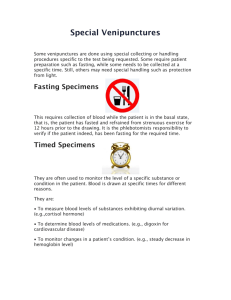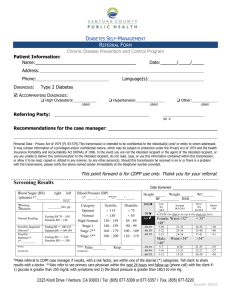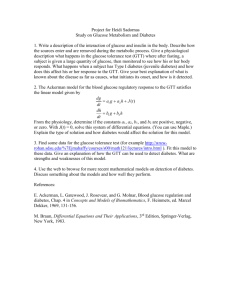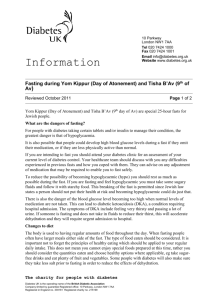Position Statement
advertisement
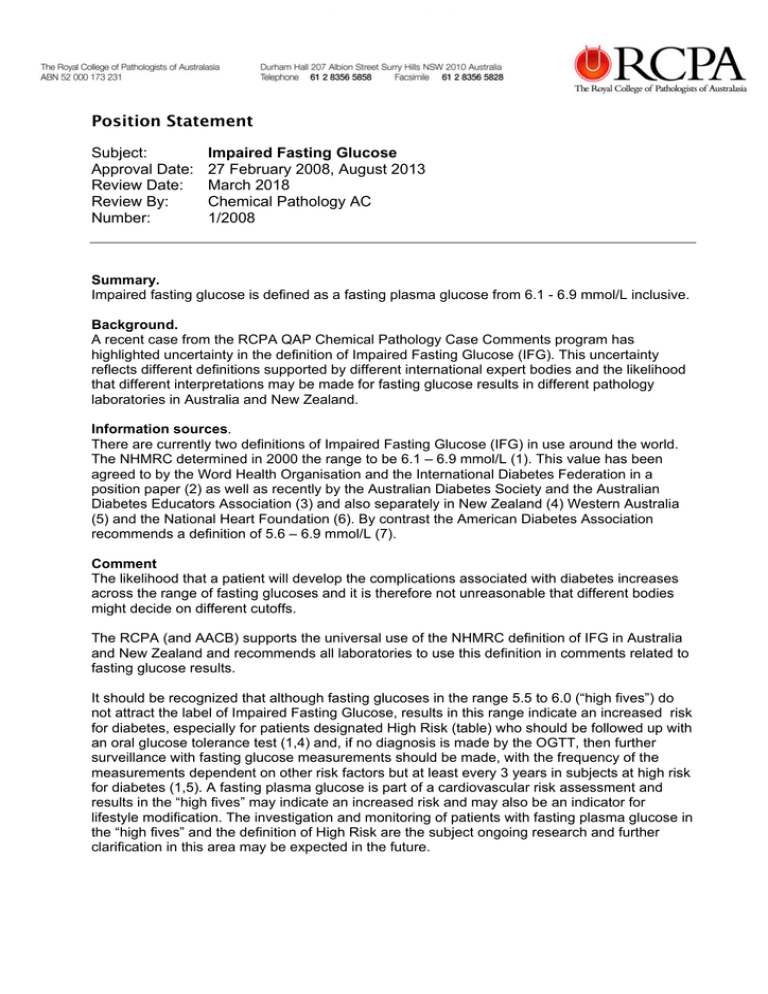
Position Statement Subject: Approval Date: Review Date: Review By: Number: Impaired Fasting Glucose 27 February 2008, August 2013 March 2018 Chemical Pathology AC 1/2008 Summary. Impaired fasting glucose is defined as a fasting plasma glucose from 6.1 - 6.9 mmol/L inclusive. Background. A recent case from the RCPA QAP Chemical Pathology Case Comments program has highlighted uncertainty in the definition of Impaired Fasting Glucose (IFG). This uncertainty reflects different definitions supported by different international expert bodies and the likelihood that different interpretations may be made for fasting glucose results in different pathology laboratories in Australia and New Zealand. Information sources. There are currently two definitions of Impaired Fasting Glucose (IFG) in use around the world. The NHMRC determined in 2000 the range to be 6.1 – 6.9 mmol/L (1). This value has been agreed to by the Word Health Organisation and the International Diabetes Federation in a position paper (2) as well as recently by the Australian Diabetes Society and the Australian Diabetes Educators Association (3) and also separately in New Zealand (4) Western Australia (5) and the National Heart Foundation (6). By contrast the American Diabetes Association recommends a definition of 5.6 – 6.9 mmol/L (7). Comment The likelihood that a patient will develop the complications associated with diabetes increases across the range of fasting glucoses and it is therefore not unreasonable that different bodies might decide on different cutoffs. The RCPA (and AACB) supports the universal use of the NHMRC definition of IFG in Australia and New Zealand and recommends all laboratories to use this definition in comments related to fasting glucose results. It should be recognized that although fasting glucoses in the range 5.5 to 6.0 (“high fives”) do not attract the label of Impaired Fasting Glucose, results in this range indicate an increased risk for diabetes, especially for patients designated High Risk (table) who should be followed up with an oral glucose tolerance test (1,4) and, if no diagnosis is made by the OGTT, then further surveillance with fasting glucose measurements should be made, with the frequency of the measurements dependent on other risk factors but at least every 3 years in subjects at high risk for diabetes (1,5). A fasting plasma glucose is part of a cardiovascular risk assessment and results in the “high fives” may indicate an increased risk and may also be an indicator for lifestyle modification. The investigation and monitoring of patients with fasting plasma glucose in the “high fives” and the definition of High Risk are the subject ongoing research and further clarification in this area may be expected in the future. Table. Patients at High Risk for undiagnosed Type 2 diabetes (modified from reference 1). • People with impaired glucose tolerance or impaired fasting glucose; • Aboriginal, Torres Strait Islanders and Maori people aged 35 and over; • People from certain high risk populations aged 35 and over, specifically Pacific Island people and those from the Indian subcontinent or of Chinese descent; • People aged 45 and over who have either or both of the following risk factors: - obesity (BMI ≥ 30 ); - hypertension; • All people with clinical cardiovascular disease (myocardial infarction, angina or stroke); and • Women with polycystic ovary syndrome who are obese. • Women with previous gestational diabetes; • People aged 55 and over • People aged 45 and over who have a first degree relative with Type 2 diabetes. References (1) National Health and Medical Research Council. National evidence based guidelines for the Case Detection and diagnosis of type 2 diabetes mellitus. Available at: http://www.nhmrc.gov.au/publications/synopses/_files/di9.pdf. (accessed 9th October 2007). (2) http://www.idf.org/webdata/docs/Guidelines%20background.doc Accessed 9th October 2007 (3) Twigg SM et al. Prediabetes: a position statement from the Australian Diabetes Society and Australian Diabetes Educators Association. MJA 2007;186:461-5. (4) Management of Type 2 Diabetes. Appendix A. New Zealand Guidelines Group. http://www.nzgg.org.nz/guidelines/0036/ACF4758.pdf (accessed 9th October 2007) (5) Western Australian Impaired Fasting Glucose/ Impaired Glucose Tolerance Consensus Guidelines – 2005 http://www.diabetes.health.wa.gov.au/policy/docs/Western%20Australian%20IFG%20IGT%20C onsensus%20Guidelines.pdf (accessed 9th October 2007). (6) Reducing risk in heart disease 2007. http://www.heartfoundation.com.au/downloads/ReducingRisk_HeartDisease_FullGuide_2007.p df (accessed 9th October 2007). (7) Diagnosis and Classification of Diabetes Mellitus. Diabetes Care 2007; 30:S42-S47. 2
